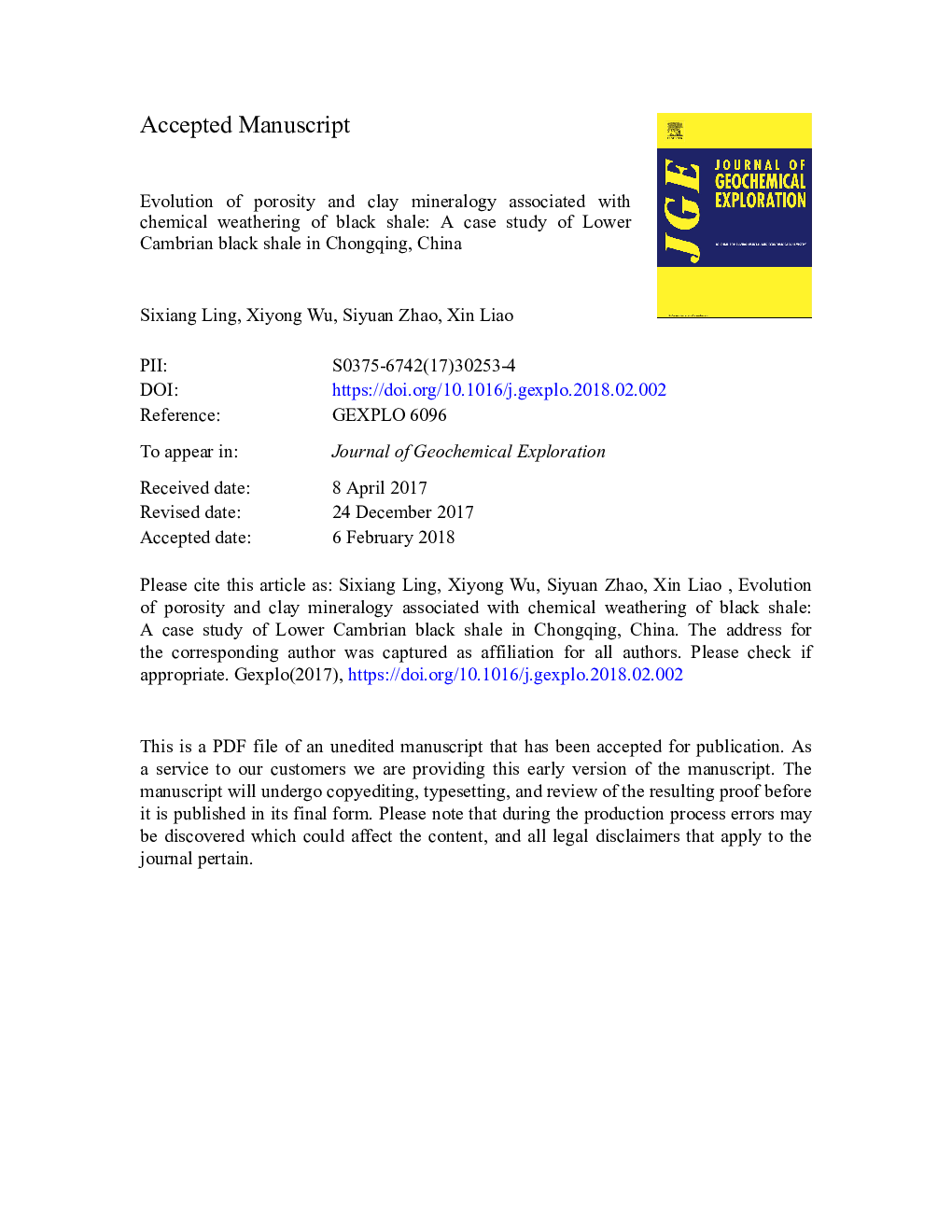| Article ID | Journal | Published Year | Pages | File Type |
|---|---|---|---|---|
| 8866019 | Journal of Geochemical Exploration | 2018 | 45 Pages |
Abstract
This work aimed to evaluate the evolution of pore networks and clay mineral in black shale weathering systems in Chongqing, China. The pore-size distributions, relationships between fractal dimensions and minerals, and clay mineral weathering pathways were evaluated for three weathering profiles, A, B, and C, which were characterized as weak, weak to moderate, and moderate to intense based on the Chemical Index of Alteration. It was found as the shale density decreased, the porosity and specific surface area increased with decreasing depth during weathering. The largest pore diameter peak in a pore-size distribution graph shifted further right as the degree of weathering increased. Micro-transition pores (<100â¯nm) dominated the parent shale, while mesopores (0.1-1â¯Î¼m) and macropores (>1â¯Î¼m) dominated the saprock and regolith zones. The surface fractal dimension of the micro-transition pores was positively correlated with the pyrite and carbonate content, but negatively correlated with secondary clay mineral content. By contrast, the surface fractal dimension of the macropores was negatively correlated with pyrite and carbonate content and positively correlated with secondary clay mineral content. These relationships indicate that micro-transition pores at the surface became smoother and macropores became rougher during weathering. Inherited micas, including illite, predominated the clay fractions along transects as weathering proceeded. The pedogenic minerals (i.e., smectite, vermiculite, kaolinite, and mixed-layer minerals) were minor components in the saprock and regolith zones. Smectite formation was likely due to direct transformation from mica or illite under strongly acidic conditions. A second possibility is transformation proceeded through mixed-layer mineral intermediates, i.e., mica-smectite/illite-smectite and mica-vermiculite/illite-vermiculite. The weathering of clay minerals in black shale from weak to intense weathering stages was mica/illiteâ¯ââ¯mica-smectite/illite-smectite or mica-vermiculite/illite-vermiculiteâ¯â⯓chlorite” (including vermiculite, hydroxy-interlayered vermiculite?, and chlorite?)â¯ââ¯smectiteâ¯ââ¯kaoliniteâ¯ââ¯gibbsite. This study revealed pore geometry evolution depends on transport-limited solutions that facilitate mineral breakdown and formation. The clay mineral weathering pathways were controlled by the weathering environment and duration.
Keywords
Related Topics
Physical Sciences and Engineering
Earth and Planetary Sciences
Economic Geology
Authors
Sixiang Ling, Xiyong Wu, Siyuan Zhao, Xin Liao,
